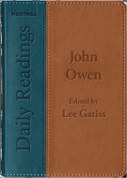
A review of Defending the Faith: John Jewel and the Elizabethan Church edited by Angela Ranson, André Gazal, and Sarah Bastow.
Defending the Faith is an edited collection of fifteen papers and an introduction originating in a 2014 conference commemorating the influential Elizabethan bishop of Salisbury, John Jewel (1522-1571). Jewel is perhaps most famous as the author of Apologia Ecclesiae Anglicanae, or The Defense of the Church of England (first published in 1562 and subsequently reprinted, translated, and expanded many times), which gave rise to a prolific controversy against both Papists and Puritans studied not only in England but also among Continental divines. That Jewel and his student Richard Hooker (1554-1600) are seen as champions of the Elizabethan Church at a crucial moment in history ensures Jewel an honored place as a founding father of the Anglican tradition around the world today.
Yet he is little known outside scholarly circles, while his protégé Hooker, whose prose is far more dense and difficult , has taken all the plaudits and most of the attention since the 17th century. This useful but variable volume seeks to fill a lacuna in Jewel studies by examining his life and work in the wider context of gender studies, material culture, and social history.
Jewel’s place in the community of Reformers and his connection to Peter Martyr Vermigli is traced by Angela Ranson, and his role as a homiletical (rather than a systematic) theologian is well argued by André Gazal. In his chapter, Torrance Kirby examines Jewel’s infamous Challenge Sermon at St Paul’s Cross in 1559, which he rightly claims is “the most famous sermon delivered there throughout Elizabeth’s long reign and arguably one of the most influential of all the sermons preached at St Paul’s Cross throughout the tumultuous course of the English Reformation(s)” (47).
This throwing down of the gauntlet to enemies of the Reformation produced an unprecedented reaction and response over the next decade and more, claiming the initiative and the high ground both ecclesiologically and in terms of patristic appropriation. I’m not convinced Kirby is correct (in an era of subjective reader-response criticism) to claim that the Elizabethan Prayer Book influenced by Jewel “emphasizes even more strongly the marked emphasis on the essential role of the individual subject as the interpreter of the meaning of the sacrament” (56); but he is right to give Jewel an important place in “the reformulation of the hermeneutics of presence” (55) that took place in England at this time.
There is some useful material here locating Jewel in the long-term battle against heresy in general, and a fascinating examination of cathedral ministry (such as Jewel would have been involved in). I was less persuaded by the somewhat tendentious approach in Alice Ferron’s study of Jewel’s first English translator, Anne Cooke Bacon, which attempts to make much out of a paucity of raw material. Angela Ranson’s piece on Jewel’s controversy with Thomas Harding helpfully puts that long-running saga into a wider perspective.
Surprisingly, however, it does not glance for very long at anything Harding said, preferring the idea of “textual communities” as a way into analyzing the social context of some of the debate. Aislinn Muller’s chapter 8 seems to be more about John Foxe than John Jewel. Similarly, Sarah Bastow is more interested in Edwin Sandys in chapter 12, failing in my view, to conclusively prove that there was a “vast” difference between the reforming strategies of Sandys and Jewel (though asserting it a few times), unless one simply assumes that an academic engaging in written combat cannot also adopt an aggressive approach to reform in other actions as well.
There are also some lavishly footnoted explorations here of, for example, Elizabethan dialogic culture and the role of Ignatian scholarship in the development of English episcopacy. But the reader may often feel as if John Jewel is strangely absent, for one supposedly being celebrated, and that is a pity. In the section on Jewel’s legacy, however, Andrew Atherstone’s thrilling narrative of the Bishop Jewel Society at Oxford University in the middle of the 20th century is a treat, throwing up many provocative questions for those engaging in the perennial struggle to repristinate Reformation theology for today’s church without falling into the danger of romantic antiquarianism.
There are some annoyances in spelling and footnoting which one would not expect in such an expensive scholarly tome (Truman for Trueman, conscious for conscience, the wrong title for Anthony Milton’s magnum opus, etc.). This can frustrate if one wishes to follow up on Ussher’s five books on episcopalianism, for example (mentioned on page 270 but not cited in the footnote, which only references Milton), or to discover “frequent” examples of a particular alleged phenomenon (which page 64 claims there are, though the footnote can list only a single example). Nevertheless, this volume is an enjoyably erudite pathway into the world of John Jewel, which will only leave the reader longing for a more in-depth engagement with the central subject himself.
This review first appeared in Reading Religion in May 2020.



































![The-Tragedy-of-1662-Gatiss-Lee-9780946307609[1] The-Tragedy-of-1662-Gatiss-Lee-9780946307609[1]](https://leegatiss.files.wordpress.com/2014/04/the-tragedy-of-1662-gatiss-lee-978094630760911.jpg?w=496&resize=496%2C704#038;h=704)